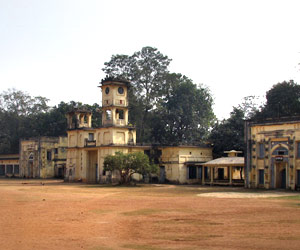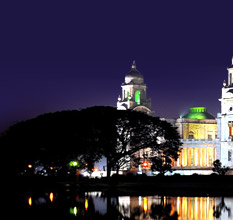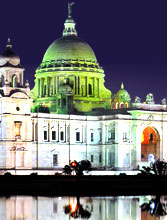 Popularly called 'The Land of Red Soil', Birbhum is primarily an agricultural district in the state of West Bengal. It is also one of the oldest-formed districts in the state. Its topography and rich cultural heritage are some of the distinctive factors that the district is famous for. Apart from this, the Visva Bharati University at Santiniketan, established by Rabindranath Tagore, is one of the places Birbhum boasts of. Though the place is an illustrious destination, it traces its origin to a very modest beginning. To get detailed information about the history of Birbhum, read through the following lines.
Popularly called 'The Land of Red Soil', Birbhum is primarily an agricultural district in the state of West Bengal. It is also one of the oldest-formed districts in the state. Its topography and rich cultural heritage are some of the distinctive factors that the district is famous for. Apart from this, the Visva Bharati University at Santiniketan, established by Rabindranath Tagore, is one of the places Birbhum boasts of. Though the place is an illustrious destination, it traces its origin to a very modest beginning. To get detailed information about the history of Birbhum, read through the following lines.Origin & History Of Birbhum
Prehistoric Times
As per records, the history of Birbhum dates back to the prehistoric times. Archaeological remains related to Pandu Rajar Dhibi of Chalcolithic Age, popularly known as the Copper Age, and Stone Age found at several places in the district vouch for the fact. In accordance with the old Jain book Acaranga Sutra, the last or the 24th Tirthankara Mahavira had wandered away from his land in 5th century B.C. He had wandered to a pathless country of Ladha, in Vajjabhumi and Subbhabhumi (probably Suhma). As the spread of Jainism and Buddhism coincided, it became a part of the process of Aryanisation in the area.
According to a Buddhist text, Divyabdan, Gautam Buddha had passed through Birbhum, to go to Pundravardhana and Samatata. A part of the Mauryan Empire, the Rarh region was later included in the empires of the imperial Guptas, Shashanka and Harshavardhana. However, with the downfall of Harshavardhana’s empire, the region came under the rule of the Palas until the 12th century. It was during the rule of the Palas that Buddhism flourished here, with full force. Thereafter, the region passed into the hands of the Senas
Medieval Age
The 13th century marked the arrival of the Muslims in the Birbhum region. Though the area, then, was ruled by the Hindu chiefs ‘Bir Raja’s, the western part of the region is supposed to have been under the control of the Muslims. While the towns of Hetampur, Birsingpur and Rajnagar contain the relics of the Hindu rule, the book 'Tabaqat-i-Nasiri' indicates Lakhnur as the headquarters of the Muslim rule. If myths are to be believed, the forests of Vajjabhumi were the focal points of Hindu and tantric activities, as the area was a haven of solitude and seclusion.
It was during this time that Birbhum came to be known as Kamkoti, which stands for tantric heritage. Tantrics, together with the Vajrayana, Shaktas and Buddhists, took a step further and built temples for tantra sadhana rituals and Shakti worship. This is the reason why Birbhum, today, boasts of many Shakti Peethas, such as Tarapith, Bakreshwar, Kankalitala, Fullara near Labhpur, Sainthia and Nalhati.
Modern Era
Under the rule of the British East India Company, Birbhum gained its present name and charge, as the administrative unit, in 1787. In the former years, the district was much bigger in size than its present boundaries. Bishnupur and Santhal Parganas were also a part of the Birbhum district. While the former came under the Bankura district in 1793, the latter sprawled up to Deoghar in the west, after the Santhal rebellion of 1855-56.
In 1872, the towns of Suri, Rajnagar, Dubrajpur, Kasba, Sakulipur, Labpur, Barwan Mayureswar were a part of Birbhum district, with the total area comprising of 1344 sq miles. Seven years later, Barwan, with an area of 108 sq. miles, was transferred to Murshidabad, while the thanas of Rampurhat and Nalhati were transferred from Lalgunj subdivision to Birbhum. Today, Birbhum district sprawls over an area of 1755 sq miles and is one of the important districts in West Bengal, internationally renowned as the seat of Rabindranath Tagore.








